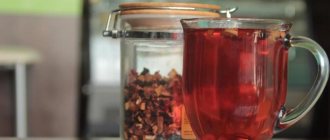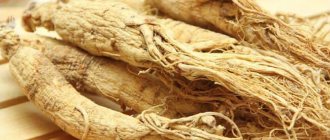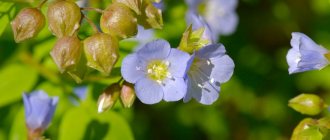This article was prepared by our beloved partners - the #GMfood - an online store of superfoods and craft eco-products.
Just for registering in the store you will receive 300 rubles to your personal bonus account and 2 more interesting gifts (Grab your gifts here)In the store's assortment you will find not only superfoods, but also healthy sweets, breakfasts, herbal teas, peanut butter, master classes for body health and facial beauty, and this is only a small part of the goodies and benefits!
Subscribe to Instagram #GMfood using this link and regularly receive new PP recipes with superfoods, see useful guides to the world of proper nutrition, and also look for gifts hidden under the link in the profile!
Some information about licorice
The homeland of licorice is considered to be Asia Minor and Central Asia and the Mediterranean. It was presumably brought to China by merchants along the Great Silk Road. From China it came to Tibet, then to Europe and America.
Licorice is a genus of herbaceous plants of the legume family. Its representatives are found in the temperate and subtropical zones of Eurasia and America, North Africa, and Australia.
Source Wikipedia
Licorice is one of the most ancient medicinal plants.
Licorice root is used as a medicinal raw material. It has a burning and sugary-sweet taste; it is dug in the fall.
It is popularly called licorice, licorice root. Licorice has a thick, woody rhizome with underground shoots and a root that penetrates deeply into the soil. The stem is straight, reaches a height of 50-100 centimeters. The leaves are oval-heart-shaped, odd-pinnate, covered with sticky punctate veins.
The flowers are small, white-violet, bluish-lilac or lilac, collected in racemes in the form of a spike. One inflorescence can have up to 30 flowers. It blooms in July-August and is a good nectar-bearing plant. The fruits are smooth or hairy beans, compressed from the sides. Ripen in August-September.
Here's how the poet talks about licorice:
Where does it grow?
In its natural environment it is found in Eastern and Southern Europe, in the Northern Caucasus, Western Siberia, North Africa, Central and Western Asia. It grows in large quantities in Turkmenistan in the valley of the Amu Darya River. Cultivated in almost all areas with a temperate climate. It lives in flooded areas or with large accumulations of groundwater. Licorice glabra is found in the beds and banks of reservoirs, shallow streams, floodplains and river valleys, at the bottom of shallow ravines, steppe and brackish meadows, rocky and sandy slopes. In mountainous areas where the plant's roots touch groundwater, licorice populations reach altitudes of 2000 m above sea level.
Medicinal properties
Licorice root has many beneficial properties:
- Anti-inflammatory;
- Antiviral;
- Antipyretic;
- Expectorants;
- Laxatives;
- Diuretics;
- Antioxidant;
- Antitumor;
- Anti-aging;
- Enveloping;
- Wound healing;
- Antispasmodic;
- Detoxifying.
Ancient Chinese healers believed that licorice root prolongs life, preserves youth and beauty, and increases the body's resistance to various diseases.
The beneficial properties of licorice root are equated to the properties of ginseng. It strengthens the immune system, corrects the endocrine system, reduces cholesterol levels in the blood, and stimulates the secretory function of the glands.
What does licorice root help with?
Licorice root is recommended for bronchial asthma, bronchitis, pneumonia, gout, rheumatism, and kidney pathology. The effect will be much better if you use complex treatment from the collection of horsetail, birch, and knotweed.
It is prescribed for pyelonephritis, inflammation of the bladder, and urolithiasis.
It is used as an effective aphrodisiac for men, for the treatment of prostatitis, prostate gland.
Licorice root is used to treat angina pectoris, rhinitis, ARVI, nephritis, hypotension, cholelithiasis, nephritis. It is useful for lupus erythematosus, neurodermatitis, allergic dermatitis, and skin diseases. To treat the skin, decoctions and infusions of licorice are used externally.
Licorice root is used for the prevention and treatment of gastrointestinal diseases. Preparations based on it regulate the secretion of gastric juice and relieve heartburn.
To prevent the development of caries and gum inflammation, you can simply chew pieces of licorice root.
Collection and preparation
The raw materials for preparations based on licorice are the rhizomes and roots of the plant. When collecting, the age of the licorice is taken into account. It must be at least 3-4 years old. The suitable root is brown with a yellow interior when broken. Harvesting depends on weather conditions. Starts in March and ends in November. The dug up roots are cleaned and damaged parts are removed. Large parts are slightly crushed and dried in the sun for 2 days. When drying in a dryer, the temperature is set to no more than 40 degrees. During the process, the raw materials are turned over to dry evenly and remove excess sand and soil. The finished root bends when bent and does not break. If all storage rules are followed, licorice can be stored for about 10 years. The popularity of licorice is declining, and many countries have included it in their Red Book. As recommendations, it was decided to streamline the preparations and introduce licorice glabra into the culture.
Benefits for women
Doctor says
Anastasia Mertsalova
The combined opinion of doctors on this issue
Licorice root in combination with therapy helps treat infertility, normalizes the cycle, restores the level of the hormone estrogen, which is especially important during menopause. Reduces pain on critical days.
Decoctions and infusions are useful for women throughout their lives, as well as during menopause.
During menopause, you can prepare a herbal decoction. To do this, pour half a liter of boiling water over the flowers of calendula, violet, elderberry, licorice root, and buckthorn bark, add 10 g of mallow and leave to brew for half an hour. The prepared decoction should be drunk during the day in 3 doses.
For amenorrhea, in a 1:1 ratio, take licorice root, St. John's wort, rue, juniper berries and pour a glass of boiling water. Brew and let it brew for half an hour. Drink a glass 2 times a day.
To normalize hormonal levels, pour 1 tablespoon of licorice root into a glass of boiling water and cook for half an hour. Then let it brew for half an hour. Take 30 minutes before meals from the 5th day before ovulation. After 3-4 weeks of use, you should take a break.
Licorice root is useful for older people to improve body tone and prolong the period of physical and mental activity.
Botanical description
Licorice glabra is a herbaceous perennial plant with a height of 50 to 150 cm. The root system is well developed and consists of a thick short rhizome and the main erect root, growing up to 10 cm in thickness and 4-5 m in length. Due to this length of the root, the plant receives water from deep underground waters. Long, numerous underground shoots (stolons and rhizomes) extend from the main root, forming roots and shoots of the second and subsequent orders.
The stems are erect, glandular, drooping, and sparsely branched.
The leaves are imparipinnate, alternate, 5-20 cm long, with 9-17 dense ovate or elliptical, less often lanceolate, leaflets, shiny and slightly sticky due to the abundance of glands.
The flowers are collected in sparse, long, cluster-shaped axillary inflorescences - racemes. Peduncles reach a length of 3-7 cm, and racemes - 5-12 cm. The flower is bisexual, formed by a sharp-toothed small calyx and a white-violet or pink-violet corolla, consisting of 5 petals. Blooms from May to June or June to July depending on the region.
The seeds are kidney-shaped and shiny. Gray-green or brownish in color, about 3-5 mm. Ripen in August or September.
The fruit is brown, elongated, oblong, flattened, single-locular bean, covered with small glandular spines or bare. Includes from 1 to 8 seeds.
Contraindications
Licorice root is contraindicated:
- If you are allergic to the product;
- Individual intolerance;
- Increased activity of the adrenal glands;
- Heart failure;
- Hypertension;
- With blood clotting disorders.
When taking licorice root, be sure to follow the recommendations and dosage indicated in the instructions. It cannot be combined with medications for high blood pressure that have a diuretic effect, or with medications for heart failure.
An overdose can lead to headaches and heart pain, increased blood pressure, and swelling.
Features of interaction
The instructions for licorice root syrup warn:
- that therapy with thiazide diuretics increases the likelihood of developing potassium deficiency;
- increased hypokalemia can be observed when combined with cardiotonic drugs, glucocorticosteroids, medications for the treatment of cardiac arrhythmias - their combination is prohibited;
- It is necessary to avoid taking the syrup with other medications containing ethyl alcohol.
Combined use with an alcohol component can cause redness of the skin, fever, rapid heartbeat, and vomiting. The list of drugs prohibited in joint therapy with licorice root syrup is presented:
- Disulfiram, Cefamandole, Cefoperazone;
- Latamoxef, Chloramphenicol, Chlorpropamide;
- Glibenclamide, Glipizide, Tolbutamide (other hypoglycemic drugs);
- Griseofulvin, Metronidazole, Ornidazole;
- Tinidazole, Ketoconazole, Procarbazine;
- medications responsible for suppressing the functionality of the central nervous system.
Licorice syrup is not used simultaneously with drugs intended to suppress phlegm production and suppress the cough reflex. Anti-cough medications slow down the removal of mucous secretions from the respiratory tract, impair the flow of oxygen into the lungs, and can cause inflammatory processes in the respiratory organs.
Licorice root can reduce the effectiveness of medications intended to lower blood pressure. Concomitant use with laxatives can cause serious electrolyte imbalance.
If therapy requires the use of third-party drugs, then the question of the advisability of combining them with syrup is decided by the attending physician.
Application
Licorice glabra is used medicinally to treat respiratory diseases. It has antitussive and mucolytic (sputum thinning) effects. Licorice root is widely used in medicine, pharmacology, and cosmetology.
Licorice root in cosmetology
Despite its rich color, the root has a whitening effect, so it can be used to reduce age spots.
A decoction of licorice root will help strengthen hair, restore damaged ends, and give it shine and volume. With frequent use of the decoction, the hair can be slightly lightened.
Many cosmetic products for dry and sensitive skin have been created based on licorice extract. It is included in anti-aging creams, skin cleansers, hair cosmetics, and whitening products.
Products with licorice gently cleanse the skin, do not irritate it, and normalize the functioning of the sebaceous glands.
In pharmacology
Licorice root is included in diuretic and laxative preparations, in preparations for the treatment of gastritis and peptic ulcers. To treat cough, a chest elixir, licorice root extract, syrup, powder, and tablets are made.
In folk medicine
Licorice root is an effective remedy for restoring liver function. Tea with licorice normalizes blood glucose and cholesterol levels and prevents the development of diabetes and atherosclerosis.
Decoction
A decoction of licorice roots is used for chronic fatigue, to normalize sleep, for rapid fatigue, and to strengthen the nervous system. A decoction prepared with milk is useful for children with whooping cough. Chewing licorice root is recommended for laryngitis and pharyngitis.
To prepare the decoction 1 tbsp. l. Pour a glass of boiling water over the licorice root and cook for 15 minutes in a water bath. After this, let it brew for an hour. Strain, add boiling water to 200 ml and drink throughout the day.
Infusion
Useful for arthritis, ulcers, tumors. To prepare it, 1 tsp. Pour a glass of boiling water over the crushed roots and let it brew for an hour. Drink ⅓ glass a day.
Herbal collection
Useful for colds and coughs.
To prepare it, take 1 tbsp. l. crushed licorice root, tsp. lemon balm, mint, centaury. Brew like regular tea. You need to drink one to two cups a day.
Lotion
It can be prepared at home and used to lighten age spots.
To prepare it, 1 tsp. crushed licorice root, pour 50 ml of vodka and seal tightly. Place in a dark place for 2 weeks. Then strain and add a little boiled water. Wipe your face with the resulting solution once a day.
Hair Mask
It will make your hair healthy and give it volume.
In 200 ml of warm milk add a tablespoon of chopped licorice root and ¼ tbsp. l. saffron Mix and rub into the hair roots while warm. Cover the hair with film, wrap it in a towel and leave for 2 hours. After this, rinse off with warm water.
The procedure should be done 2 times a week for a month.
In cooking
Licorice root can be used as a natural sweetener. It can be added to baked goods instead of sugar to give baked goods a pleasant aroma and sweet taste.
Crushed licorice root can be added to drinks. It will give them an unusual taste and aroma. You can add it to puddings, ice cream, cake creams, and sorbets. You can add licorice root to meat and fish dishes, fruit and vegetable salads, and sauces.
Licorice root is used in the food industry as a flavoring agent for various products. They flavor tobacco to give it a pleasant smell. It is used in the preparation of dark beers, rums and liqueurs.
Application in cooking and other fields
Licorice glabra is actively used in cooking, giving dishes an unforgettable, sweetish, spicy taste and aroma. It is used:
- for the production of confectionery products;
- as part of other spices and herbs;
- to maintain product freshness;
- when preparing sparkling water, kvass and beer – it has excellent foaming properties;
- for the production of hot and cold drinks;
- as a sugar substitute;
- as an additive to meat, fruits, fish – gives a specific unforgettable taste to dishes;
- for better whipping of egg whites;
- when preparing soaked apples and sauerkraut, berries - helps prevent mold and fermentation of products;
- for making chocolate;
- in the production of beer.
Licorice is used in various forms:
- to improve the aroma of tobacco in the tobacco industry;
- for dyeing wool, silk;
- when making soap;
- to improve the quality of glue and cement;
- for the production of ropes;
- for the production of fertilizers, parchment and thermal insulation boards;
- in the textile, leather, chemical industries;
- in the production of fire extinguishers, ink, paints, inks;
- in metallurgy – to suppress sulfur fog in electrolysis baths.
Reviews from real people
What do buyers think about licorice root?
Feedback on the forum
Review on the forum Review on the forum
Feedback on the forum
Feedback on the forum
Feedback on the forum
Feedback on the forum
There are many reviews and they are all positive.
Chemical composition
The underground part of the plant contains:
- glycyrrhizin (the largest amount is contained in rhizomes than roots);
- carbohydrates – sucrose, glucose, polysaccharides, starch, cellulose, others;
- flavonoids;
- resins;
- phenolcarboxylic acids, their derivatives – ferulic, salicylic and others;
- organic acids, their derivatives – succinic, malic, citric, ascorbic;
- essential oils;
- tannins;
- starch;
- higher fatty acids;
- coumarins;
- pectin substances;
- asparagine;
- bitterness.
INTERESTING: Glycyrrhizin, contained in the shoots and roots of licorice, is 50 times sweeter than sugar and has a pronounced anise flavor.









